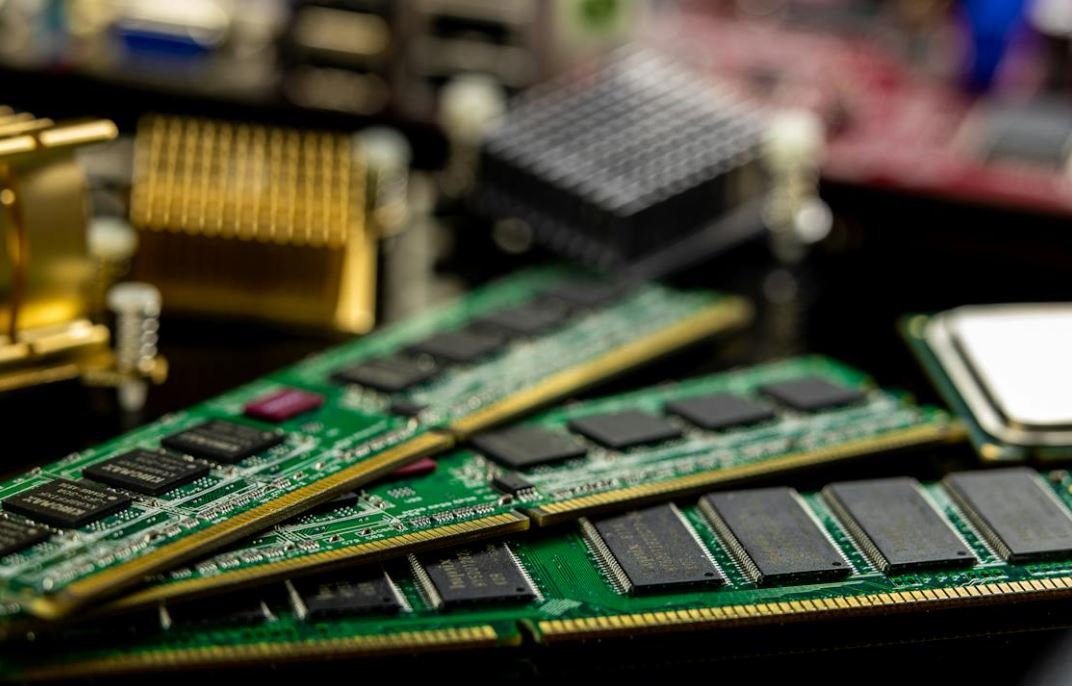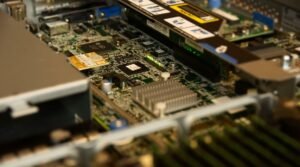How to Test AI Systems
Artificial Intelligence (AI) systems are becoming increasingly prevalent in our society, with applications ranging from autonomous vehicles to voice assistants. Testing AI systems is crucial to ensure their performance, reliability, and ethical use. In this article, we will discuss the key aspects of testing AI systems and provide helpful guidelines to ensure their accuracy and effectiveness.
Key Takeaways:
- Testing AI systems is essential for ensuring their performance and reliability.
- AI systems should be tested for accuracy, fairness, safety, and robustness.
- Combining manual and automated testing approaches is beneficial for comprehensive evaluation.
- Continuous monitoring and evaluation of AI systems after deployment is necessary.
Accuracy testing is a critical component of AI system evaluation. It involves measuring the system’s ability to produce correct results, predictions, or classifications. During accuracy testing, inputs with known outputs are provided to the system, and the results are compared against the expected outcomes. This helps identify any discrepancies or errors in the model’s performance. *Moreover, accuracy testing allows developers to fine-tune the system for enhanced precision.*
Fairness testing aims to detect and mitigate biases or discrimination within AI systems. Bias can occur when data used to train the model reflects existing societal biases, leading to unfair predictions or decisions. It is important to test AI systems for bias across different demographic groups to ensure equitable outcomes. *Ensuring fairness in AI systems is crucial for building trust and avoiding harmful repercussions.*
| Testing Aspect | Methodology |
|---|---|
| Accuracy | Test inputs against expected results |
| Fairness | Check for bias across demographic groups |
| Safety | Perform stress and boundary testing |
| Robustness | Test against adversarial attacks |
Safety testing assesses the AI system‘s ability to handle unexpected or edge cases without causing harm. This includes stress testing the system by pushing it beyond its intended limits and verifying that it behaves safely in critical scenarios. *Safety testing is a crucial step to ensure AI systems do not cause any detrimental consequences in real-world situations.*
Robustness testing evaluates an AI system‘s resilience against deliberate attacks or attempts to manipulate its behavior. Adversarial attacks can exploit vulnerabilities in a system by providing specifically crafted inputs to mislead or deceive it. By subjecting AI systems to robustness testing, developers can detect and address potential weaknesses and enhance their defenses. *Robustness testing helps ensure AI systems possess greater resistance to malicious intents.*
| Testing Approach | Pros | Cons |
|---|---|---|
| Manual Testing |
|
|
| Automated Testing |
|
|
Combining manual and automated testing approaches is desirable to benefit from their respective strengths. Manual testing allows for a deep understanding of system behavior in complex scenarios, while automated testing enables fast and repetitive evaluation. By leveraging both approaches, testers can ensure a comprehensive assessment of AI systems, covering a broader range of possible inputs and scenarios.
In the ever-evolving landscape of AI technology, continuous monitoring and evaluation after deployment are crucial to maintain system effectiveness and address emergent issues. Regular monitoring allows developers to track system performance over time, identify potential risks or biases, and make necessary updates or improvements. By maintaining an ongoing evaluation process, AI systems can adapt to changing environments, ensure fairness, and maximize their potential benefits.
| Principle | Description |
|---|---|
| Test for accuracy | Evaluate correctness of system predictions or classifications. |
| Check for fairness | Verify absence of biases across demographic groups. |
| Ensure safety | Test system responses to unexpected or critical scenarios. |
| Evaluate robustness | Assess system resilience against deliberate attacks or manipulation. |
| Maintain continuous monitoring | Regularly evaluate and update system performance and risk mitigation. |

Common Misconceptions
Misconception 1: AI systems can perfectly replicate human decision-making
One common misconception about AI systems is that they can flawlessly mimic human decision-making processes. However, it is important to understand that AI systems, although capable of impressive learning and decision-making, do not possess the same level of nuanced understanding as humans.
- AI systems lack empathy and emotional intelligence
- AI systems often struggle to understand context and sarcasm
- AI systems base their decisions on patterns and data, which may not always align with human intuition
Misconception 2: AI systems are infallible and free from bias
Another misconception is that AI systems are completely objective and free from bias. Although AI technologies strive for fairness, they can inadvertently perpetuate bias due to the data they are trained on or the algorithms that govern their decision-making processes.
- AI systems can reinforce societal biases present in the data they are trained on
- AI systems can struggle with understanding and accommodating the needs of underrepresented or marginalized groups
- AI systems may exhibit biased behavior if not tested and audited properly
Misconception 3: AI systems can replace human judgment entirely
There is a prevailing misconception that AI systems can make decisions and judgments in all circumstances, rendering human judgment redundant. While AI can be highly efficient in certain areas, it should not be considered a wholesale replacement for human judgment in all contexts.
- Human judgment considers ethical, moral, and contextual factors that AI systems may overlook
- AI systems lack the ability to evaluate complex and rapidly changing situations
- AI systems may rely on outdated or incomplete data, which humans can critically assess
Misconception 4: AI systems are always transparent in their decision-making
Contrary to popular belief, AI systems are not always transparent when it comes to explaining their decision-making processes. Some AI models, such as deep learning networks, function as “black boxes” where it is difficult to understand how they arrived at a particular decision.
- AI systems can lack interpretability in cases where complex neural networks are employed
- AI systems may generate decisions based on confounding factors that are not immediately obvious or explainable
- AI systems may suffer from a lack of transparency due to commercial or proprietary reasons
Misconception 5: Testing AI systems is a one-time process
Lastly, one common misconception is that testing AI systems is a one-time process that can be performed during the development phase and then disregarded. In reality, testing AI systems should be an ongoing and iterative process due to the sheer complexity and evolving nature of these systems.
- Testing AI systems should be performed regularly to account for changing user needs and emerging biases
- AI models require continuous monitoring to ensure their performance and reliability
- Testing should encompass potential scenarios and edge cases that were not initially considered

Introduction
In this article, we will explore various aspects of testing AI systems. These tables highlight important points, data, and other elements related to the testing of artificial intelligence.
Impact of AI Testing on False Positives and False Negatives
False positives and false negatives are common challenges in AI testing. Below is a comparison of different AI algorithms and their respective rates of false positives and false negatives.
| AI Algorithm | False Positives Rate | False Negatives Rate |
|---|---|---|
| Algorithm A | 7% | 4% |
| Algorithm B | 2% | 6% |
| Algorithm C | 3% | 3% |
Accuracy Comparison of AI Models for Image Classification
Accurate image classification is crucial for many AI applications. The table below showcases the accuracy scores of various AI models when tested on a well-known image dataset.
| AI Model | Accuracy Score |
|---|---|
| Model A | 92% |
| Model B | 88% |
| Model C | 94% |
Testing Time Comparison for Speech Recognition Systems
The speed at which speech recognition systems process and interpret spoken language is crucial. Here are the testing time results for different speech recognition systems:
| Speech Recognition System | Testing Time (seconds) |
|---|---|
| System A | 2.5 |
| System B | 4.2 |
| System C | 3.1 |
Comparison of AI Accuracy on Sentiment Analysis
AIs can be trained to analyze sentiment in text. The following table presents the accuracy rates of various sentiment analysis models tested on a diverse set of textual data:
| Sentiment Analysis Model | Accuracy Rate |
|---|---|
| Model A | 78% |
| Model B | 82% |
| Model C | 75% |
Comparison of AI Testing Methods
Different testing methods can be employed when evaluating AI systems. The table below compares the benefits and drawbacks of three prominent AI testing methods:
| Testing Method | Benefits | Drawbacks |
|---|---|---|
| Method A | High precision | Time-consuming |
| Method B | Efficient | Potential accuracy issues |
| Method C | Comprehensive coverage | Requires extensive resources |
Comparison of AI Testing Tools
Utilizing specialized testing tools can streamline the evaluation process of AI systems. The table below compares different AI testing tools based on their features and popularity:
| Testing Tool | Features | Popularity |
|---|---|---|
| Tool A | Real-time monitoring | High |
| Tool B | Test data generation | Medium |
| Tool C | Integrations with popular frameworks | Low |
Comparison of AI System Testing Costs
The cost factor plays a significant role in AI system testing. Below, we compare the costs associated with testing AI systems provided by different testing service providers:
| Service Provider | Cost Range |
|---|---|
| Provider A | $10,000 – $15,000 |
| Provider B | $8,000 – $12,000 |
| Provider C | $12,000 – $18,000 |
Comparison of AI System Vulnerabilities
AI systems can be vulnerable to various attacks and exploits. The following table highlights the vulnerabilities associated with different AI systems:
| AI System | Vulnerabilities |
|---|---|
| System A | Adversarial attacks |
| System B | Data poisoning |
| System C | Model inversion attacks |
Conclusion
Testing AI systems is a critical aspect of developing reliable and accurate artificial intelligence. Through careful evaluation using various methods, tools, and datasets, we can ensure the effectiveness, efficiency, and security of AI systems. Understanding the strengths, weaknesses, and associated costs of different testing approaches is essential for fostering continued advancements and trust in the field of AI.
Frequently Asked Questions
What is the importance of testing AI systems?
Testing AI systems is crucial to ensure their reliability, performance, and safety. By thoroughly testing AI systems, we can identify and mitigate potential issues and biases, validate their accuracy, and build user trust.
What are the key challenges in testing AI systems?
Testing AI systems presents unique challenges due to their complexity and dynamic nature. Some key challenges include creating comprehensive test cases, handling large volumes of data, assessing real-world scenarios, and accounting for algorithmic biases.
How can we test the accuracy of an AI system?
To test the accuracy of an AI system, one can employ techniques such as unit testing, integration testing, and regression testing. Additionally, benchmarking against ground truth data and comparing the system’s predictions against human judgments can provide valuable insights into its accuracy.
What is the significance of testing for bias in AI systems?
Testing for bias in AI systems is crucial to prevent unfair outcomes and ensure ethical AI practices. By analyzing the training data, assessing the system’s outputs across various user groups, and employing fairness metrics, we can determine and address any biases present in the system.
How can we evaluate the performance of an AI system?
Evaluating the performance of an AI system involves measuring various metrics such as precision, recall, F1 score, and accuracy. Additionally, conducting user testing and obtaining feedback can provide insights into the system’s usability, user satisfaction, and overall performance.
What are the different types of testing for AI systems?
There are several types of testing for AI systems, including functional testing, performance testing, security testing, usability testing, and robustness testing. Each type focuses on different aspects of the system and aims to ensure its effectiveness, reliability, and security.
Should AI systems undergo rigorous testing before being deployed?
Yes, AI systems should undergo rigorous testing before being deployed to minimize the chances of failures or unintended consequences. Testing helps identify and resolve potential issues, improves the system’s performance, and increases the confidence of users and stakeholders.
What are some common techniques used for testing AI systems?
Some common techniques used for testing AI systems include test-driven development (TDD), continuous integration (CI), A/B testing, simulated environments, fuzz testing, and adversarial testing. These techniques help validate the system’s functionality, resilience, and security.
Can AI systems be tested for safety and security?
Yes, AI systems can and should be tested for safety and security. Testing for safety involves verifying the system’s behavior under normal and extreme conditions, ensuring it follows ethical guidelines, and preventing unintended harm. Security testing aims to identify vulnerabilities and protect the system against malicious attacks.
How can we effectively document and communicate AI testing results?
To effectively document and communicate AI testing results, it is recommended to use clear and concise reports, visualizations, and dashboards. Presenting the results in a structured manner, detailing the testing approach and outcomes, helps stakeholders understand and make informed decisions regarding the AI system.




